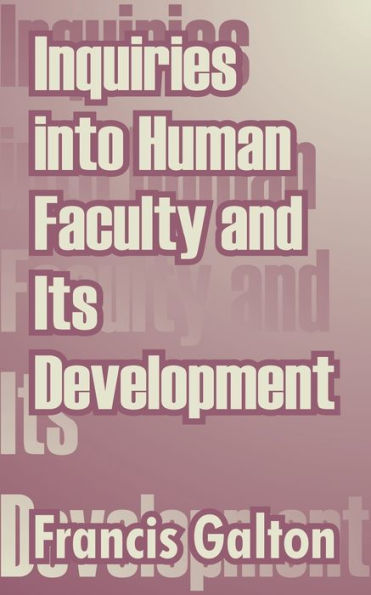Inquiries into Human Faculty and Its Development is an 1883 book by Francis Galton, in which he covers a variety of psychological phenomena and their subsequent measurement. In this text he also references the idea of eugenics and coined the term for the first time.
1100041921
Inquiries into Human Faculty and Its Development
Inquiries into Human Faculty and Its Development is an 1883 book by Francis Galton, in which he covers a variety of psychological phenomena and their subsequent measurement. In this text he also references the idea of eugenics and coined the term for the first time.
30.0
In Stock
5
1

Inquiries into Human Faculty and Its Development
288
Inquiries into Human Faculty and Its Development
288Paperback(New Edition)
$30.00
30.0
In Stock

Product Details
| ISBN-13: | 9781410210258 |
|---|---|
| Publisher: | University Press of the Pacific |
| Publication date: | 12/22/2003 |
| Edition description: | New Edition |
| Pages: | 288 |
| Product dimensions: | 5.20(w) x 7.96(h) x 0.73(d) |
From the B&N Reads Blog
